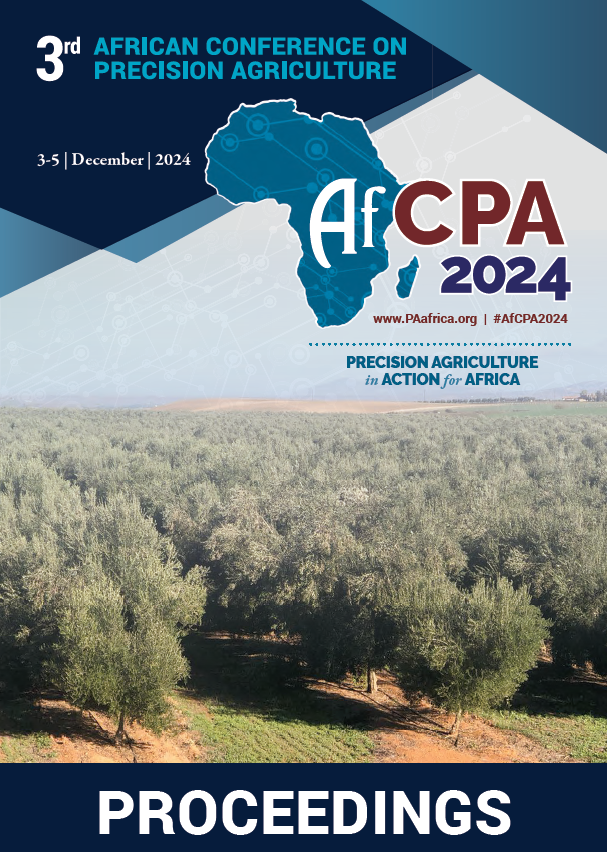Download the Conference Proceedings
Proceedings
Authors
| Filter results3 paper(s) found. |
|---|
1. Precision Farming Technology to Increase Soil and Crop Productivity in Egypt Using Remote Sensing and GISPrecision farming or site-specific land management is a new approach for development the agriculture processes to increase the soil and crop productivity with saving efforts and costs. Precision farming includes many techniques such as Global Position Systems (GPS), Geographic Information Systems (GIS), Remote Sensing (RS), Yield Monitors, Internet of Things (IOT), Variable Rate Application (VRA), Yield Mapping, Site-Specific Management Zones (SSMZ) and Crop Modeling. SSMZ delineation can be improved... A. Belal, M. Elsayed , M.E. Jalhoum, M. abdelatif , E. Hendawy , M. Emam, M. Zahran |
2. Effect of Plant Population and Nitrogen Rate on Growth and Yield of Two Pre-release rice varieties in KenyaThe application of precision agriculture (PA) through the optimization of plant population and management of fertilizer nitrogen (N) can increase rice yield. Current rice (Oryza sativa) plant population and fertilizer nitrogen (N) management guidelines in Kenya were developed from research conducted about three decades. These management guidelines might still be robust and could be applied to recently released as well as close-to- release varieties. However, the yield potential of... W. Kioko, W. Kioko, W. Kioko, W. Kioko, O. Kitonyo, G. Chemiming'wa, S. Gebeyehu, R. Murori |
3. Monitoring Grazing Goats' Behavior Using Sensors and Satellite Remote SensingThe recent development of new methods for remotely observing animal behavior using electronic sensors such as global positioning systems (GPS) and three-axis accelerometers to monitor and record behavior at different spatial and temporal scales presents real opportunities for better understanding and interpreting the behaviors of grazing animals. The goal of this study was to distinguish different behavioral categories of grazing goats by combining GPS collars, accelerometers, and satellite remote... Y. Chebli, S. El otmani, J. Cabaraux, M. Chentouf , A. Keli, F. Elame |
